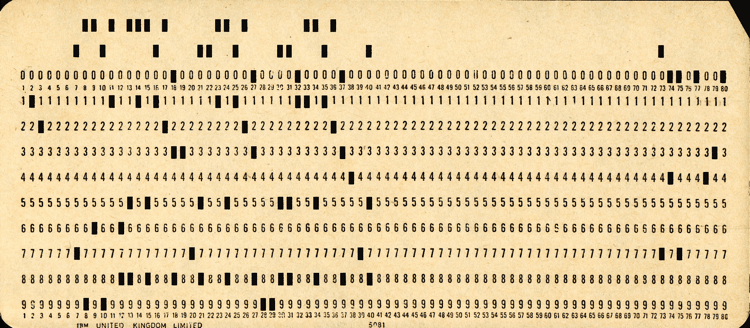Hollerith
I’m diving into Dennis Yi Tenen’s Literary Theory for Robots, which Ben Shneiderman mentioned this morning. (Why do people keep writing interesting books that must be taken into account before I can finish my own? Good grief!)
On page 7, Tenen asks why a byte is eight bit? He explains thus: It just so happens that the rectangular punch card in use by early tabulating census machines, and later by IBM, would not physically fit more than eight characters across, in rows of seventy to eighty columns stacked. The convention of an eight-but byte (and eighty-character code line) persisted, even though magnetic tape and later “hard drive” media were no longer constrained by those limitations.
One problem here is obvious: standard punched cards had twelve rows, not eight.
Another problem is that the enormously-successful PDP-8 was a 12-bit computer.
That the 80-character line derives from the constraints of punched cards is also, I think, rather doubtful. Indeed, the narrow aspect ratio of the punched-out hole that must not be spindled, folded or mutilated was surely dictated by the desire to get more characters into a line. The old typographer’s rule of thumb calls for lines between two and three alphabets, or 52-78 characters., per line.
